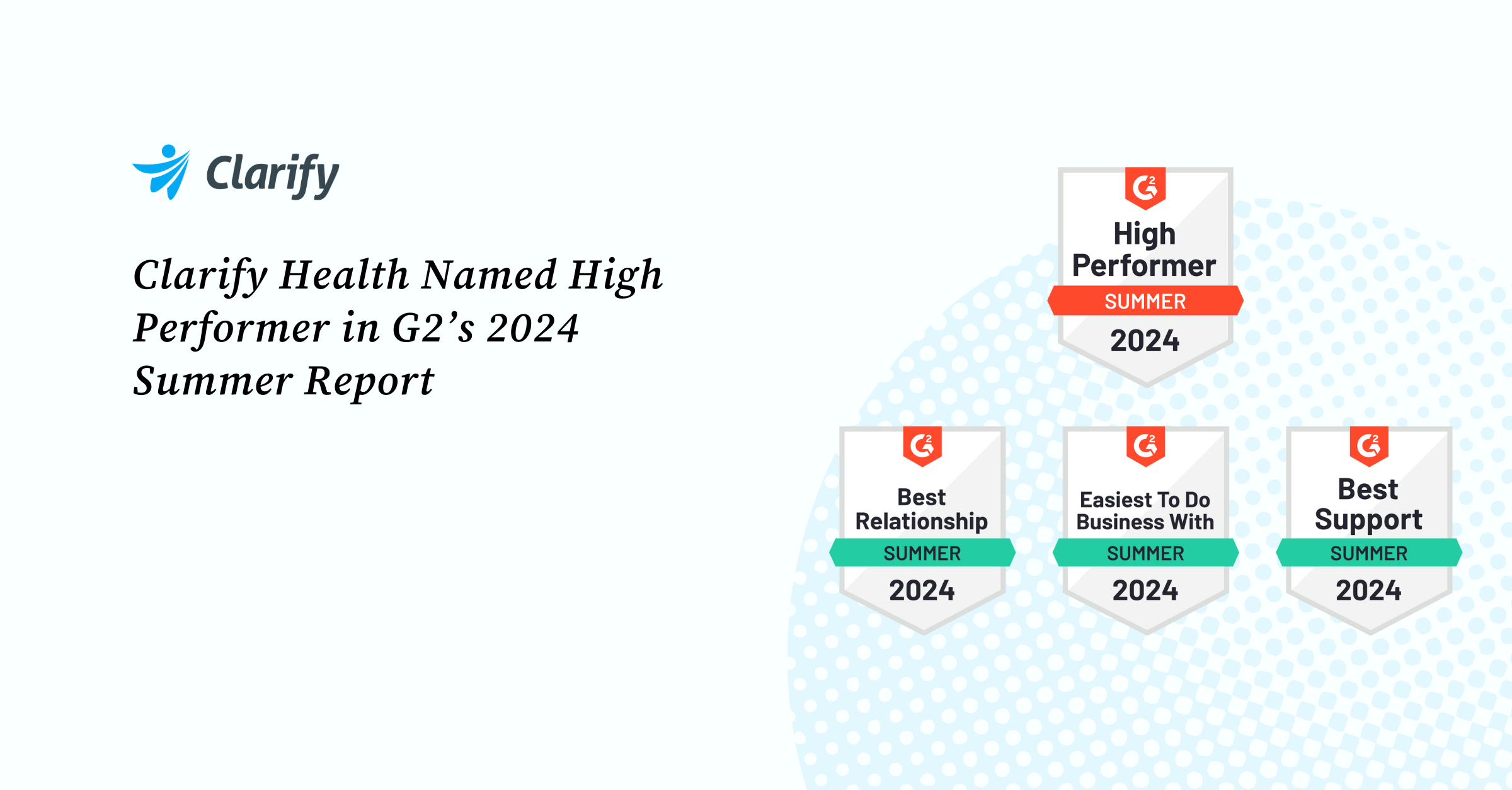
Jul 9, 2024
May 6, 2022
The Clarify Health Institute (CHI) is a source of truth on the quality and efficiency of the US healthcare system, and a driver of transparency across the industry. Nishta Giallorenzo, Chief Marketing Officer, Clarify Health met with Niall Brennan, Chief Analytics and Privacy Officer, Clarify Health to discuss the mission, goals, and purpose of the Clarify Health Institute.
Video Transcript:
Nishta Giallorenzo: I’m Nishta Giallorenzo, I’m the Chief Marketing Officer of Clarify Health. I’m joined by Niall Brennan, who is the Chief Analytics and Data Privacy Officer of Clarify Health. He’s going to be leading the Clarify Health Institute. Without further ado, I just want to jump right in and ask Niall a few questions. Niall, give us a little bit more about your background.
Niall Brennan: I’m super excited to be here at Clarify. I was really drawn to Clarify for a couple of reasons. I’ve known the co-founder, Jean and Todd, for a number of years and have really been impressed with their commitment to the company, their commitment to the broader public good, and their commitment to improving transparency in healthcare. Side-by-side with improving transparency, they kind of go hand-in-hand with reducing friction in healthcare.
Nishta Giallorenzo: That’s wonderful to hear, so excited to have you with us. As you think about the mission and purpose of the Clarify Health Institute, just tell us a little bit more about what you envisage the Institute becoming and how that ties to Clarify’s mission, which is to power better care.
Niall Brennan: It’s still early days, but we have, I think, a very clear vision for what we want to do. Obviously, touched on transparency in my opening comments. We really do have incredible data assets, and I think as an organization we want to be more than just another vendor. We want to take some of the insights from our data and make them more available to the world at large, whether that’s issue briefs, white papers, academic publications, public use files, more interactive consumer-facing data, because there are so many stories that need to be told about healthcare quality, about healthcare cost, about healthcare efficiency. The reality is, despite all the relative progress over the last five to 10 years, there’s still much more that is not known about healthcare spending and quality than is known.
We view the Clarify Institute as a really critical and additive component to the overall Clarify brand.
Nishta Giallorenzo: If you think broadly around all the stakeholders, those providing care, those insuring care, and those consuming healthcare, what are some of the concrete ways in which the Institute will be helping improve outcomes?
Niall Brennan: We need to identify things that work, and we need to socialize them, share them, and scale them. From a provider perspective, they’re trying to navigate complex value-based care agreements. That space is changing constantly. Can we bring insights and research to bear that can lead to better value-based arrangements between payers and providers, whether that’s at the actual blocking and tackling of these are the metrics, or thresholds, or benchmarks that we will hold you to, to actually making the day-to-day interactions between providers and payers a little easier.
I think also patients are frequently a little bit of an afterthought in US healthcare. We’re very focused on the patient, on making patient journeys better. Can we create consumer-facing applications or information that make it easier for people to navigate healthcare? Think of something as simple as surgical volume. We’ve been talking about surgical volume for years. It’s been written about by academics. People always bring it up as a pain point or an area where there is literally no information. Hypothetically, maybe we can bring more information on which surgeons do more of a particular procedure, then the next step is maybe link it to outcomes, and very quickly you’re starting to get at some real impact.
Nishta Giallorenzo: What do you think the Clarify Health Institute will look like or become in two years, three years from now?
Niall Brennan: In two years time, I’d love if it was not unusual to see JAMA articles, health affairs articles, articles in other peer-reviewed literature using Clarify data, if that became the norm, and accepted, and encouraged, and embraced. Ultimately my goal is when people have a question, if people say, “I wonder what the answer to that question is,” their first reaction is, “Well, let me see if the Clarify Health Institute has done something on that area,” or, “Let me call up Clarify and ask if they have those insights.” That would be my goal.
Nishta Giallorenzo: Thank you very much, Niall, for joining us today for this fireside chat. It was really, really awesome to have you.